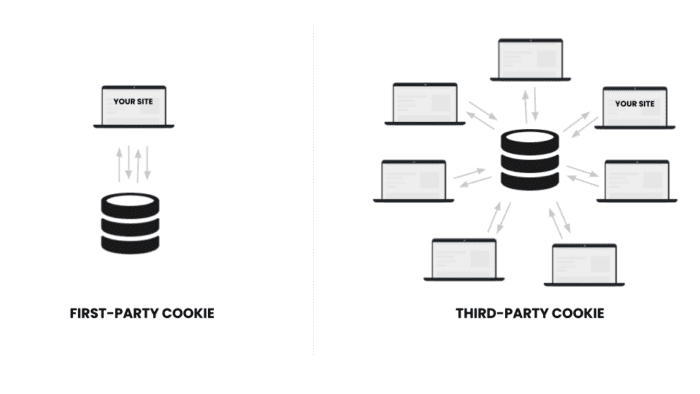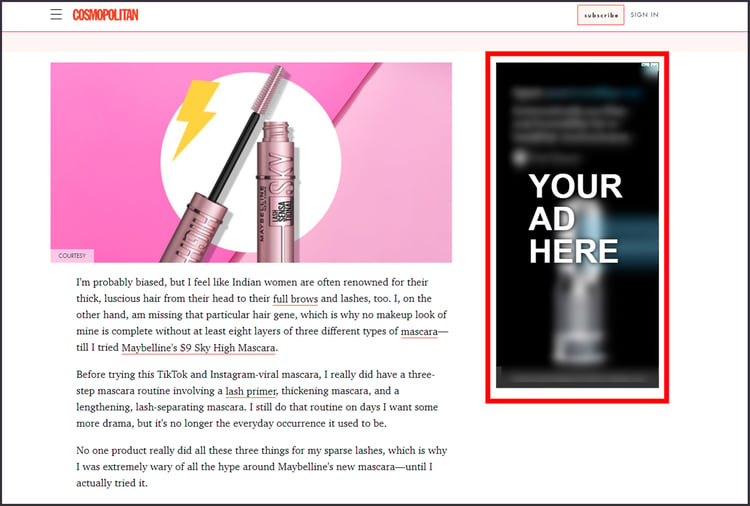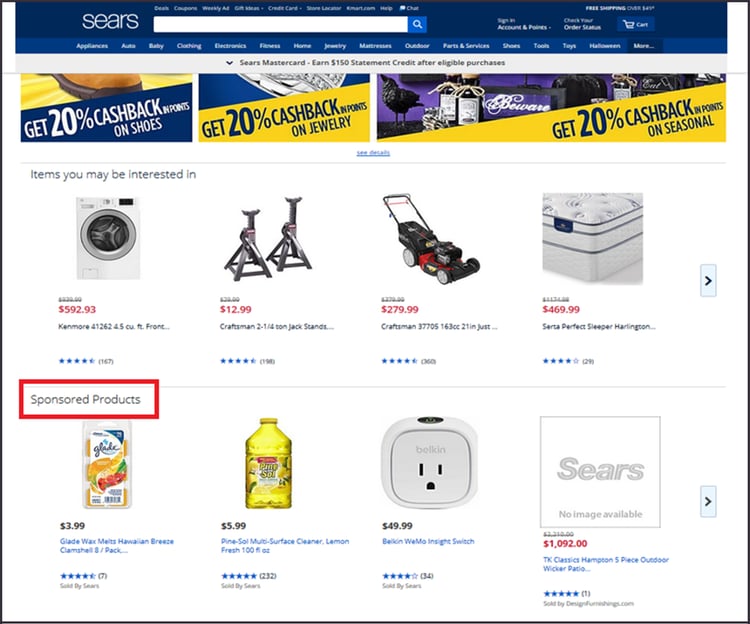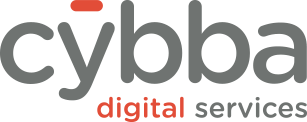Announced by Google Chrome last year, third party tracking - also known as browser cookies - will be retired in 2022. While you may have heard of third party cookies before, you may not know how they play a crucial role in digital advertising and the experience of the open internet.
This massive rollout will have a major impact on the AdTech industry, and brands and marketers especially will need to rethink how they can use data to reach the right audiences and provide personalized experiences.
Before we give our recommendations on what immediate adjustments brands can make to maintain a high level of effective advertising, let’s first briefly touch on what browser cookies are and why they’re going away.
"Regardless of what alternative we end up with, there’s a few ways advertisers can still maintain a high level of advertising efficiency without the use of third-party data."
What Are Browser Cookies?
Any time a session occurs on a website, a random numerical ID known as a “cookie” attaches itself to the website visitor’s browser. This ID is useless on its own until it starts to gather behavioral and event data from the website visitor.
There are two types of browser cookies – first party and third party.
First party cookies include only first party data from the host domain. It is data that is gathered as a result of the direct relationship between the browser and the brand that owns the website.
When you visit a website and are asked to consent to cookies, you’re consenting to this first party cookie gathering and storing the actions you take on the website. They make it possible so things like account logins, product recommendations, and shopping cart items can all be remembered by the website so that when customers return they can have an enjoyable, seamless experience. It’s for this reason, and the fact that first party data gathering requires a direct relationship between browser and the website’s brand, that these types of cookies are not a cause for consumer privacy concern.
What a lot of consumers weren’t aware of, and thus led to industry changes, was that websites were also storing browser cookies from outside vendors, also known as third-party cookies. So an outside brand was able to gather data that didn’t necessarily have a relationship with the website user, and use that data for its own targeting purposes, or to sell to other buyers, all without the user’s knowledge or consent. This has caused concerns with consumer privacy issues and leads us to where we are today.

(source: Bloom)
What Does Third Party Cookie Deprecation
Mean for Advertisers?
Without viable alternatives, the decline of third party cookies would lead to massive reduction in addressable audiences, and the inability to use behavioral targeting and accurately track ad performance.
Although Google has an alternative in place in what they call the Privacy Sandbox, other big tech companies have come up with some great solutions on their own. The Trade Desk partnered with IAB to come up with the Unified ID 2.0 , which essentially uses an encrypted and secure alternative for cookies called an “open ID”; advertisers and publishers can use their list of opted in users to convert them to open IDs, but once converted, those IDs cannot be traced back to an email address.
What these solutions are aiming to do is to require users to opt-in to allow brands to send them relevant and personalized ads, but making the opt-in process as easy as possible for users across the open internet.
Regardless of what alternative we end up with, there’s a few ways advertisers can still maintain a high level of advertising efficiency without the use of third-party data.
The Rise of Private Marketplaces
Third party cookie deprecation means a greater reliance on first-party data, and nobody has more of that than Facebook, Google, and Amazon. As these data-rich platforms assert even more dominance over the industry, we’ll begin to see more brands trying to compete by recognizing the importance of their own first party data, and how it aligns with other brands’ customer profiles.
We’ll see a shift in the AdTech industry with the rise of first party data monetization, and an increase in investments with these new and existing publishers in the form of private marketplace deals (PMP).
PMP advertising, while the CPMs are typically more expensive, gives brands a way to reach their target customer outside of Facebook and the Google Display Network, which have become increasingly more saturated as brands look for rich first-party data sources.

Publishers like Cosmopolitan.com, for example, has access to large set of first-party data, so they can offer premium ad space to a cosmetics brand that is looking to get in front of audiences that show explicit interest in the products they offer.
Learn more about PMP: [Datasheet: PMP]
Contextual Targeting and Native Advertisements
While 3rd party cookies allow brands to follow users across the web, contextual targeting anticipates where your target audience is likely to end up and what page content they’re likely to engage with. Expect this tactic to regain in popularity since it’s effectiveness doesn’t rely on targeting a specific user profile. It also makes for more cohesive experiences across the web by aligning the brand or product that’s featured in the ad to the content of the web page.
With third party tracking, users were likely to be targeted with ads wherever and whenever they browsed the web. So for instance, if you had gone shopping on Cars.com, then days later you go visit your favorite gardening blog, you’re likely to see an ad from an automotive dealership. Interruptive and intrusive experiences like these are a large contributor to banner blindness, and the fact that 42.7% of internet users worldwide have installed adblocker software.
Contextual targeting makes the ad experience more relevant, informative, and valuable. It’s a tactic that doesn’t rely on user identification, but rather, recognizes that the content of the website aligns with the brand or product that is being featured in the ad.

Native ads can often appear in the sponsored content or product sections, like in the example above, or on social media or news sites, as part of the “in-stream” content.
Brands will often use native ad formats when using contextual targeting because the paid media blends in so well with the content. Matching both the design and editorial style of the website, native ads provide more relevancy to the audience than traditional display ads, and often result in higher engagement.
Learn more about Native Ads: [Datasheet: Native Ads]
"You can then improve the ROI of your campaigns in two ways: by eliminating wasted media spend with the suppression of converted users and mistaken identities, and by directing more media spend to your best customers and prospects."
Prioritizing First Party Data
1. Capturing ConsentAbove all else, the enhancement and growth of your first party data is a necessity for brands now more than ever.
Gathering first party data can be accomplished with a well-thought out lead capture strategy. With onsite email capture tools and incentives like free shipping, discounts, product customizations, or offering free content, users will be more likely to opt in, and you’ll be growing and scaling your CRM database quicker than you may expect.
2. Creating a Singular Customer View
Your customers are always changing. The things they shop for, their locations, their behaviors are constantly evolving, but their expectations for consistent, seamless experiences will only become greater. That’s why its important to link these attributes to a single customer profile.
As first party data becomes the sole source for targeting and audience development, brands should invest in the data they own more than they have in the past. Partner with AdTech vendors that can provide identity resolution, to connect data across all customer touchpoints, mediums, channels and platforms. When data is integrated to a global customer record, brands can draw more accurate conclusions about who their customers are and their preferences, improve segmentation and targeting efforts, and uncover cross-sell and upsell opportunities.
You can then improve the ROI of your campaigns in two ways: by eliminating wasted media spend with the suppression of converted users and mistaken identities, and by directing more media spend to your best customers and prospects.
Key Takeaways:
Above all the hysteria that marketers feel by having to adapt to change yet again, take comfort in the fact that we are moving towards a more customer centric philosophy which will in turn lead to deeper relationships between customers and brands, and greater lifetime value.
Take the opportunity to explore interesting new ways to market your brand, and be more open to the sharing and collaboration between publisher and advertiser.


